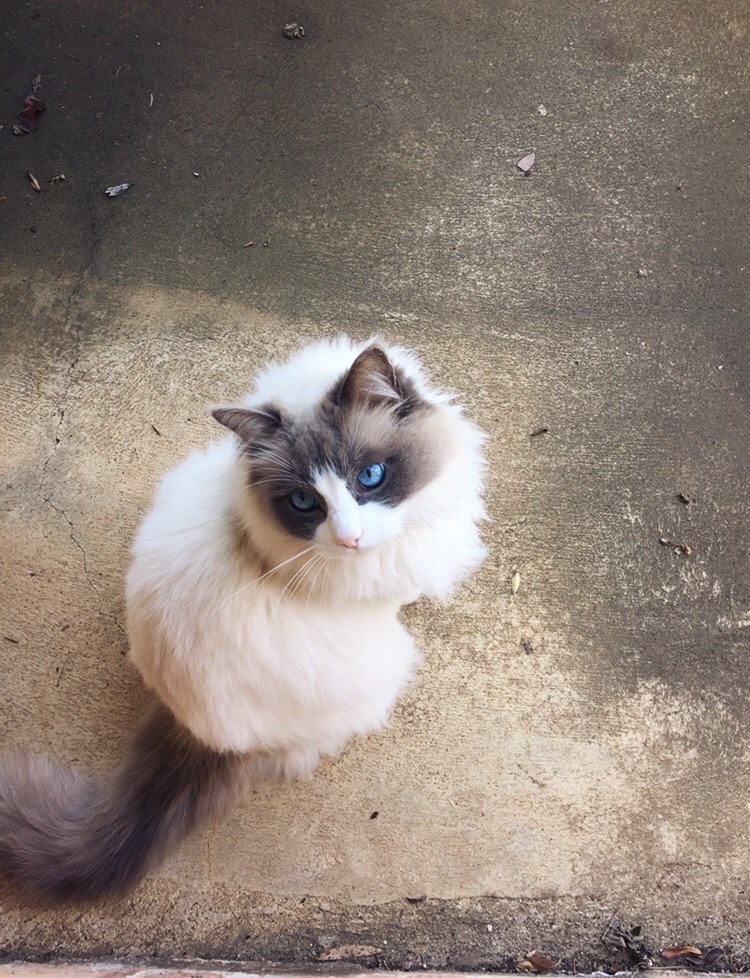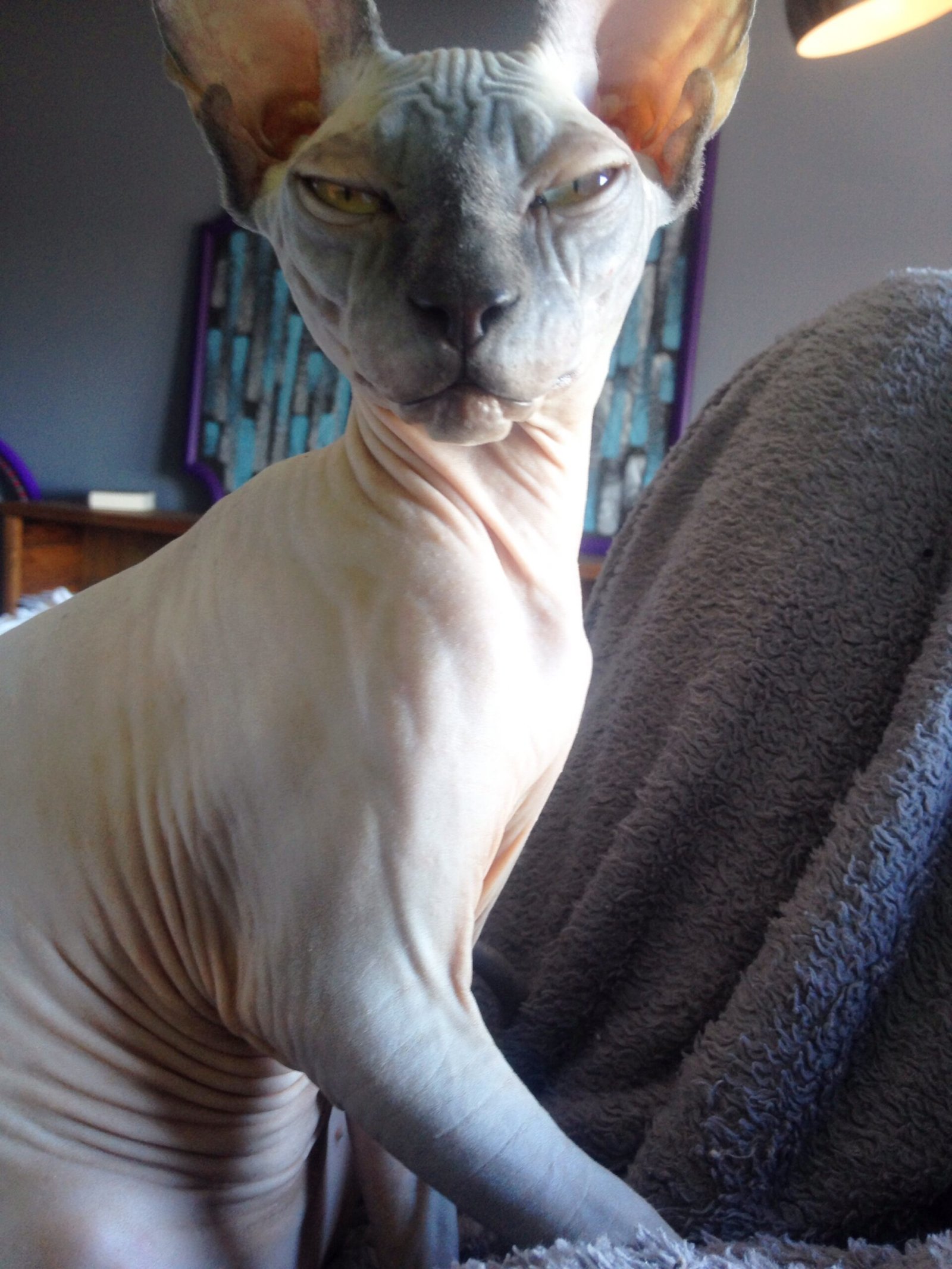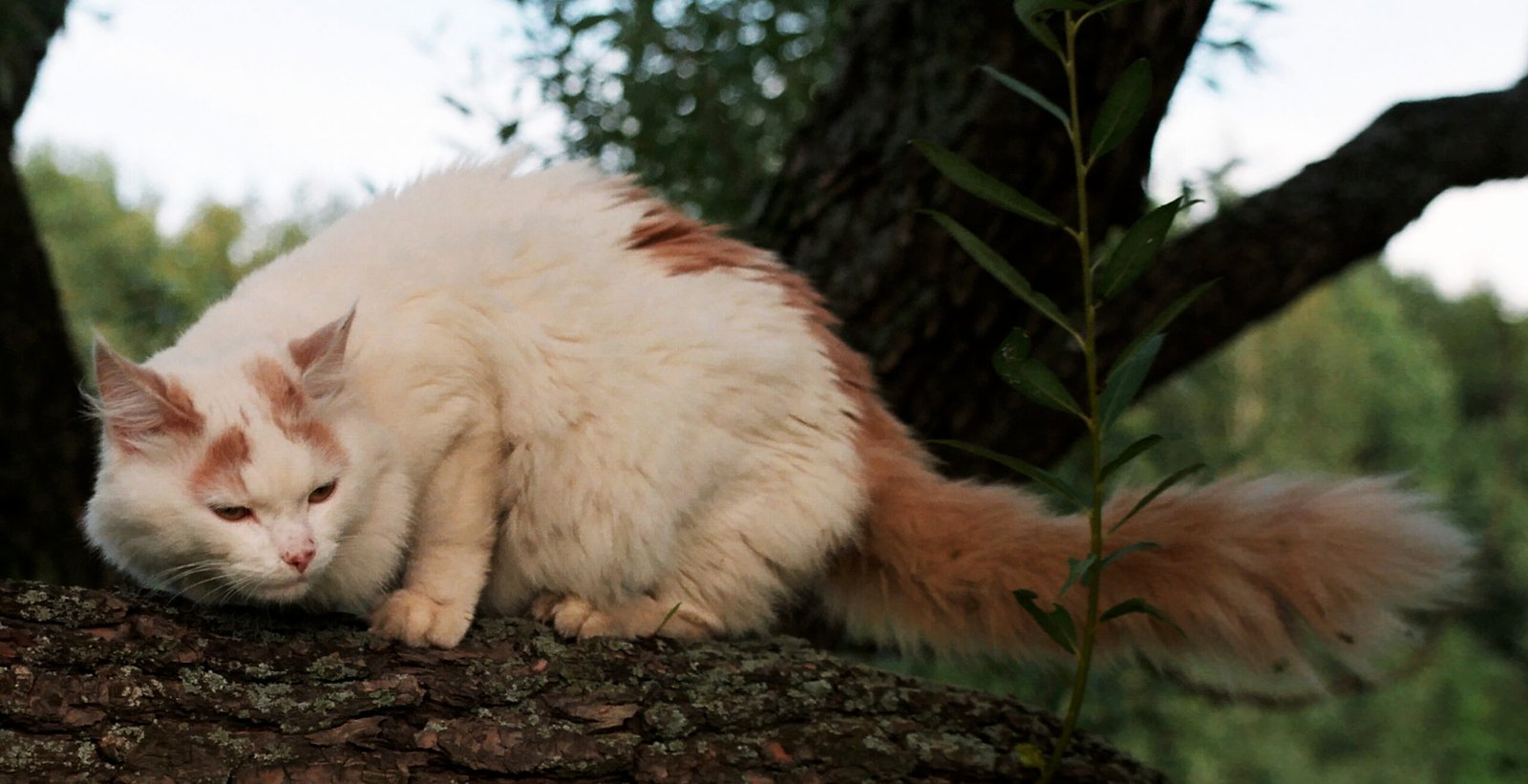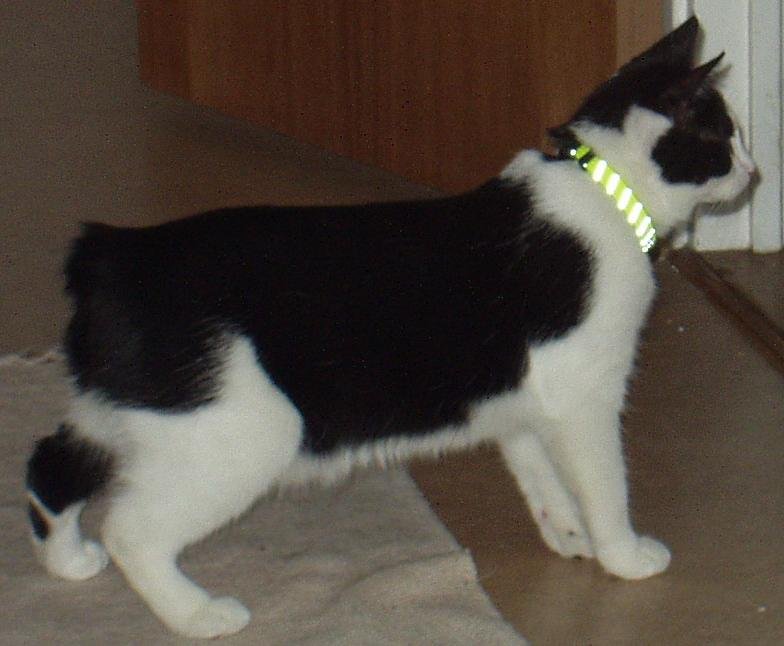Have you ever watched a cat’s tail and wondered what secret messages it’s sending? For some breeds, the tail isn’t just an accessory—it’s a whole language! From dramatic swishes to happy quivers, these cats don’t need words to tell you how they feel. Let’s take a visual stroll through 25 playful, elegant, and downright quirky tail storytellers. Get ready to meet the world’s most expressive felines, one swoosh at a time!
The Siamese: Tail Flicks Full of Drama

Siamese cats are born performers, and their tails are like tiny flags of emotion. When a Siamese is excited, its tail might quiver like a tuning fork. If it’s annoyed? Watch out for a rapid, almost theatrical flick—no hiding their feelings here! People say that Siamese cats “talk” with their voices, but it’s their tails that really spill the tea. You’ll often see them wrapping their tails around your arm, a sign of affection that’s hard to miss. And if they’re curious, their tails stand tall and proud, like a question mark. It’s like living with a feline mood ring!
The Maine Coon: Luxurious Plumes in Motion

Imagine a fluffy feather duster that tells you everything you need to know about your cat’s mood. That’s the Maine Coon’s tail! These gentle giants have bushy tails that waft behind them like capes. When content, they’ll lay their tails around themselves like a cozy scarf. See that tail puff up? Time to step back—it means surprise or excitement! Maine Coons also use their tails to signal friendliness, waving them in gentle arcs when playing or greeting family members. Their tails even help keep them warm in winter, wrapping around like a personal blanket.
The Abyssinian: Agile Tails for Agile Cats

The Abyssinian’s tail is a whip-like extension of its athletic body, always in motion. These cats seem to use their tails as balancing poles when leaping or climbing. An upright, vibrating tail is their way of saying “I’m happy to see you!” If you notice a slow, thoughtful swish, the Abyssinian is probably deep in feline contemplation. Their tails add an extra dash of elegance to their already graceful moves. It’s like watching a ballet dancer who never stops communicating, even in mid-air.
The Ragdoll: Tail “Hugs” and Relaxed Wags

Ragdolls are famous for their mellow personalities, and their tails reflect this laid-back vibe. You’ll often catch a Ragdoll draping its tail over your lap or curling it gently around another pet, almost like a soft hug. When relaxed, their tails move in slow, gentle waves. But if startled, their tails fluff out into impressive, bushy displays—think of a dandelion puff! A Ragdoll’s tail is a good barometer for their famously calm temperament, but don’t be fooled—they’ll “talk” when something’s amiss.
The Sphynx: Tail Curls Speak Volumes

No fur, no problem! The Sphynx’s naked tail is a living, curling punctuation mark. When content, Sphynx cats often curl their tails tightly around their bodies—a bit like a cinnamon roll. If excited or playful, you’ll see their tails wagging back and forth, almost as if they’re wagging like a dog. A stiff, straight tail is their version of an exclamation point, signaling curiosity or alertness. For a breed with no fur to fluff up, the Sphynx makes every tail movement count.
The Bengal: Jungle Tails and Wild Signals

Bengals bring a touch of the wild into your living room, and their tails are straight out of the jungle. When stalking toys or “prey,” their tails twitch with anticipation, like a jungle cat on the prowl. If they’re happy, their tails stand tall and sometimes quiver, showing off those beautiful stripes and spots. Bengals are known for their high intelligence, and they use their tails to communicate excitement, frustration, or even a sly sense of humor. It’s a mini safari every day!
The Scottish Fold: Tail Twists and Turns

Scottish Folds are famous for their folded ears, but their tails deserve just as much attention. Their tails are often thick and plush, and they use them like fuzzy question marks. A gentle tail curl means your Scottish Fold is feeling cozy and safe. Be careful if you see a rigid or stiff tail—this breed can be prone to tail discomfort, so pay attention! When happy, their tails may gently sway as they follow you around the house, always ready for a cuddle.
The Turkish Van: Swimming Tails in Action

Turkish Vans are known as the “swimming cats,” and their tails are like rudders in the water. On land, they use their fluffy tails for balance during their famous leaps. When excited, their tails puff up, almost making them look twice their size. If you’re lucky enough to see a Turkish Van play in water, watch how their tails steer them with surprising skill. A friendly Van will often wrap its tail around you or another cat, signaling trust and affection.
The American Curl: Curly Tails, Endless Expressions

With ears that curl backward and tails that seem to have a mind of their own, American Curls are all about unique charm. Their tails move in gentle, expressive waves, signaling everything from excitement to contentment. When extra happy, they carry their tails high, sometimes with a quirky curve at the tip. A flicking tail tip means curiosity is brewing, and a wrapped tail usually means your Curl feels safe. Their tails add a whimsical touch to their already playful personalities.
The Burmese: Tail Taps and Tippy Tails

Burmese cats are social butterflies, and their tails are always in on the action. You’ll often catch a Burmese tapping its tail gently on the floor, a subtle invitation to play or interact. When thrilled, they walk with their tails straight up, sometimes curling the tip like a cheerful question mark. If you see a slow, swaying tail, your Burmese is probably relaxing but paying close attention to you. Their tails are like tiny antennae, picking up every mood in the room.
The Russian Blue: Elegant Tail Language

Russian Blues are the introverts of the cat world, but their tails are surprisingly expressive. When content, their tails move in slow, graceful arcs. A quick, tight flick means they’re feeling shy or cautious. If you see a Russian Blue wrap their tail around their paws, it’s a sweet sign of comfort. Their tails never make a fuss but always say just enough, like a shy friend who whispers secrets only when you’re really listening.
The Cornish Rex: Curly Tails, Spirited Moves

Cornish Rex cats come with curly coats and even curlier personalities. Their slender tails are almost always moving, twitching in excitement when they spot a new toy or friend. When hunting or playing, their tails whip and curl, showing off their endless curiosity. If a Cornish Rex is feeling playful, their tail might even “dance” in spirals. It’s like someone wound up a spring and let it loose—pure feline energy!
The Norwegian Forest Cat: Viking Tails for All Seasons

With tails as bushy as a winter scarf, Norwegian Forest Cats use them for warmth and communication alike. When happy, they let their tails trail gracefully behind them. In playful moods, you’ll see their tails puff up and wave, almost like a fluffy signal flag. A tucked tail means your Norwegian Forest Cat is feeling cautious or shy. Their tails can even double as a pillow during cat naps, showing off their cozy side.
The Manx: Expressing Without a Tail

The Manx is famous for its tailless (or nearly tailless) look, but don’t be fooled—they still “talk” with what they have. A stubby tail or a little “riser” can twitch with excitement or bristle with nerves. Manx cats often use their whole body to communicate, compensating for less tail with more wiggling and posturing. It’s like watching a silent film star—no words, but plenty of expression!
The Oriental Shorthair: Whip-Smart Tail Flicks

Oriental Shorthairs have long, sleek tails that seem to move at the speed of thought. A quick flick can mean anything from impatience to excitement. When curious, their tails go poker-straight, like an antenna searching for signals. These cats are known for their big personalities, and their tails are always part of the conversation—sometimes wagging, sometimes winding around your legs.
The Tonkinese: Playful Tail Twirls

Tonkinese cats love people, and their tails show it. When a Tonk is happy, their tail might twirl around your arm or leg, wrapping you in a friendly “hello.” A lively, upright tail means they’re ready for fun, while a slow, thoughtful wave signals contentment. Tonkinese tails are like velvet ribbons, always moving and always sending a message.
The Japanese Bobtail: Lucky Tails and Joyful Wiggles

Japanese Bobtails are famous for their pom-pom tails, which wiggle with happiness. These cats are considered good luck in Japan, and their tails seem to celebrate every moment. When playful or excited, their little tails vibrate like a cheering crowd at a parade. Even at rest, their tails curl in adorable spirals, adding a touch of whimsy to their every move.
The Exotic Shorthair: Plush Tails and Sweet Gestures

Exotic Shorthairs have tails as plush as a teddy bear’s, and they use them to show quiet affection. A gentle tail flick or a soft wrap around your arm is their way of saying “I trust you.” If you see their tail puff up, it’s usually in response to a surprise. These cats may have calm personalities, but their tails are soft-spoken storytellers all the same.
The Birman: Silky Tails and Gentle Waves

Birmans have long, silky tails that trail behind them like elegant ribbons. When they’re happy, their tails sway in gentle arcs. A Birman greeting often includes a tail held high, sometimes with a cozy curl at the tip. If their tail starts to twitch, they may be getting ready to pounce—or they’re just feeling a little mischievous. Birmans use their tails to add a touch of grace to every step.
The Devon Rex: Mischief in Every Tail Flick

Devon Rex cats are natural-born comedians, and their tails are always in on the joke. When excited, their tails wag back and forth like a dog’s. A slow, sneaky wave means they’re plotting something playful. Even when curled up, their tails often twitch, hinting at dreams of catnip and chase games. Devon Rex tails are like little exclamation marks for every antic.
The British Shorthair: Thick Tails, Subtle Messages

British Shorthairs have chunky, plush tails that match their teddy bear looks. When relaxed, their tails rest gently beside them, signaling calm and confidence. If they’re curious, you’ll spot a slow, deliberate tail lift. A flicking tail tip means they’re paying attention, even if they seem aloof. Their tails may not be as dramatic as some breeds, but every movement is a quiet message.
The Balinese: Plumed Tails and Balletic Moves

Balinese cats have elegant, flowing tails that trail behind them like a dancer’s scarf. When excited, their tails plume out and sway, creating a sense of motion even when they’re still. A high-held tail means your Balinese is ready for attention, while a soft, waving tail signals relaxation. Their tails are the finishing touch to every graceful leap.
The Persian: Royal Tails and Regal Emotions

Persian cats carry their tails like royalty. When content, their tails float behind them in gentle curves. If startled, their tails fluff up into dramatic, cloud-like puffs. A slow, deliberate tail wave means your Persian is feeling especially regal today. Their tails help them communicate without a word—sometimes a single swish says everything.
The Savannah: Wild Tails, Wondrous Sways

Savannah cats are part wildcat, and their tails are always in motion. When hunting or playing, their tails twitch and sway, showing off their athleticism. A high, quivering tail signals excitement, while a low, slow wave reveals focused concentration. Savannahs love to use their tails as signals, making every moment feel like a mini safari.
The Chartreux: Blue Tails, Quiet Confidants

Chartreux cats may be known for their plush blue coats, but their tails are just as expressive. When happy, their tails curl gently around their bodies. A quick flick can mean surprise or curiosity. Even when resting, their tails often twitch, hinting at dreams of playful adventures. Chartreux tails are the quiet companions to their calm, affectionate nature.
Which of these cats would you love to meet and “talk” with?

Linnea is a born and bred Swede but spends as much time as possible in Cape Town, South Africa. This is mainly due to Cape Town’s extraordinary scenery, wildlife, and atmosphere (in other words, because Cape Town is heaven on earth.) That being said, Sweden’s majestic forests forever hold a special place in her heart. Linnea spends as much time as she can close to the ocean collecting sea shells or in the park admiring puppies.






